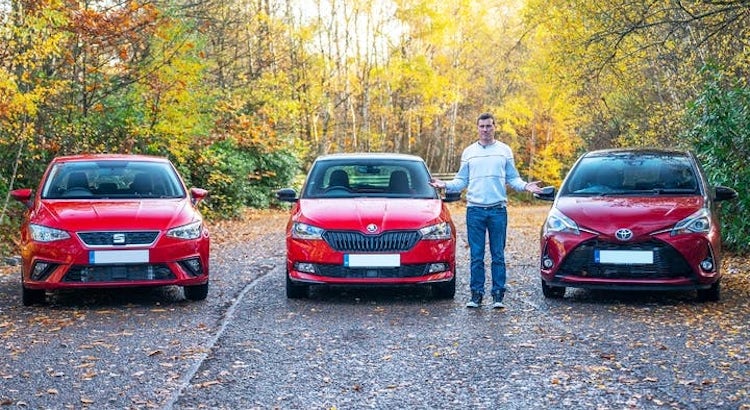Compare the best small hybrid cars
Best small hybrids of 2024
More and more small cars are being offered as hybrids nowadays - it's a great way to offset emissions and improve fuel economy, but without the expense and re-engineering required in making them fully electric, especially since it's often more cost-effective to build large electric cars than it is small ones.
Hybrid engines actually work really well with small cars, offering seriously impressive fuel economy as there's less weight for the battery and electric motor to lug around. This does usually come at the expense of a few factors, though - cabin and boot space can be reduced, as can driver enjoyment. But if you reckon that's worth it for the potential fuel savings, keep reading for our pick of the best small hybrid cars in the UK.
1. Renault Clio
Renault Clio review2. MG3
MG MG3 review3. Toyota Yaris
Toyota Yaris Hybrid review4. Mazda 2 Hybrid
Mazda 2 Hybrid reviewSell your car for what it's really worth
The free, easy way to get 4,500+ dealers all over the UK bidding on your car
5. Peugeot 208
Peugeot 208 review6. Honda Jazz
Honda Jazz review7. Vauxhall Corsa
Vauxhall Corsa review8. Toyota Yaris Cross
Toyota Yaris Cross review9. Suzuki
Suzuki Ignis review10. Ford Puma
Ford Puma reviewBrowse all small hybrid cars
Advice about small hybrid cars
Small hybrids FAQs
Hybrid cars by make
- Audi hybrid cars
- BMW hybrid cars
- Citroen hybrid cars
- Ford hybrid cars
- Honda hybrid cars
- Hyundai hybrid cars
- Jaguar hybrid cars
- Kia hybrid cars
- Land Rover hybrid cars
- Lexus hybrid cars
- Mazda hybrid cars
- Mercedes hybrid cars
- Peugeot hybrid cars
- Renault hybrid cars
- Suzuki hybrid cars
- Toyota hybrid cars
- Vauxhall hybrid cars
- Volkswagen hybrid cars
Browse other car types
- 4x4 Cars
- 7-Seater Cars
- Automatic Cars
- Cheap Cars
- Convertible Cars
- Coupe Cars
- Crossover Cars
- Electric Cars
- Estate Cars
- Executive Cars
- Family Cars
- First Cars
- GT Cars
- Hatchbacks
- Hot Hatches
- Hybrid Cars
- Luxury Cars
- MPVs
- Medium-sized Cars
- Most Economical Cars
- Motability Cars
- SUVs
- Saloon Cars
- Small Cars
- Sports Cars
- Superminis


